Equine-assisted trauma therapy
self-empowerment & stability
Accompaniment in border areas
We want to provide people from the healing and educational professions with opportunities to offer a non-judgemental, extremely attentive, supportive and stabilizing space for people who want to process their painful experiences and grow beyond them. In this expectation-free framework, everything is allowed to unfold at the client’s pace. In this way, opening, change and healing can occur because people trust each other and feel safe.
As in all of our training modules, this training is primarily about self-awareness. To the extent that we as process facilitators develop our ability to care for our needs, strengthen our ability to relate, be in touch with our body and our experience or remain present and open even in the most intense emotional states, the more we can also help other people to enter these spaces.
Our equine-assisted trauma therapy aims to create a space that creates safety and trust and thus opens the doors to healing. To this end, we offer carefully selected practical exercises and a sound overview of the theoretical foundations of trauma therapy.
Regulation & vital energy
The most important foundations for a fulfilled and happy life are laid in the womb of the mother and in the first years of life. When we grow up as children in a secure bond, we can live our impulses freely and every feeling can be expressed in the way that is right for the moment. This little person lives every moment in a permanent state of flux, curious, open and alive. The experience of loving closeness and attention enables us to develop trust in ourselves and our existence.
In the course of our development, however, this original expression changes due to painful and sometimes life-threatening experiences, such as violent assaults, abuse, neglect or loss. We become acquainted with meaninglessness, fear, shame, helplessness or powerlessness. All of this settles over our healthy core like a fog that slowly obscures our clear view of who we actually are. Out of the experience of having to protect ourselves, we develop survival structures that may have helped us to cope with or survive unbearable experiences in the early days of our lives, but which today are often extremely detrimental to our lives as mechanical adaptation strategies.
We now know that part of our nervous system reacts independently and autonomously, beyond our voluntary control. This autonomic nervous system has a considerable influence on human behavior, especially when real or perceived danger is imminent. If a situation appears – or is – threatening, parts of our body are activated so that we can defend ourselves or flee. In extreme situations, our nervous system can even ensure that we no longer need to feel or even “freeze”. We find ourselves in a kind of state of emergency that provides us with protective support when we are overwhelmed. This frozen state can be “stored” by our cell memory for a long time and sometimes leads to the nervous system no longer finding its way back to a balanced, neutral state. Those affected are then often unable to sleep when they are tired, are easily irritable, depressed, chronically tense, withdraw, have anxiety or everything seems pointless to them. Self-doubt and self-criticism are the order of the day.
Horses help people to deal with trauma in a self-empowered way. The decisive factor for the therapeutic process in this context is the energetic rootedness of horses in themselves, their ability to be present in the moment, their predominantly regulated state and the tendency to always return to this balanced point of calm. The predominantly regulated nervous system of horses supports the neuroception of safety in humans. Neuroception is a term coined by Dr. Stephen Porges, the founder of polyvagal theory, which describes the ability of all mammals (including humans) to constantly and subconsciously scan their environment for potential danger. When we feel we are in danger, the sympathetic nervous system, one of the three circuits of the autonomic nervous system responsible for flight and fight and thus for our protection, produces a defensive posture and thus reduces our ability to open up emotionally and make deep contact with our life energy and other people. In other words, if we don’t feel safe with people and situations or if our emotions and feelings threaten to overwhelm us once again, we have, to put it simply, no opportunity to engage in growth and development.
People can make use of horses’ ability to be balanced. Most of our clients feel safe in the presence of a regulated horse, which is either grazing calmly, dozing quietly or standing relaxed next to a client, and they experience such situations as calming and unobtrusive. The ventral vagus, the part of the horse’s nervous system responsible for social interaction, calm, balance or relaxation, therefore also helps people to regulate themselves and carry their states of fear, tension, sadness or pain more easily. After these feelings have been allowed to calm down somewhat, many clients describe this connection, or what it evokes, as healing, touching, heart-opening and warm. It is not uncommon for feelings of security, trust and safety to arise.
These are attributes and processes that many people lost a long time ago in the human-human relationship, but which can be experienced positively again in the human-horse connection. This initiates and promotes a process that neurobiologists such as Dr. Gerald Hüther refer to as renegotiation. Here, through a mindful and careful approach, an individual pace appropriate to the situation and a trusting and safe environment, experiences that are stored in the brain as painful or life-threatening are supplemented with positive associations or ultimately even replaced. This creates opportunities to modify and transform our reactions to old experiences. Self-reflection and personal development, including the dissolution of old patterns or emotional limitations, become possible.
This support of people’s ability to regulate themselves through horses is seen as one of the foundations of equine-assisted trauma therapy. People who come into contact with horses regularly report that tensions decrease, that something within them calms down and more inner peace emerges. Slowly, the connection to other people also becomes easier again.
Our work is not about moving someone in a certain direction, but about carefully recognizing and experiencing the current state in the here and now. In this way, the ability to relate to oneself and the fulfilling feeling of becoming more capable of action and self-determination can develop.
You can find the online form for further training further down on this page.
"Safety is the therapy"
Dr. Stephen Porges
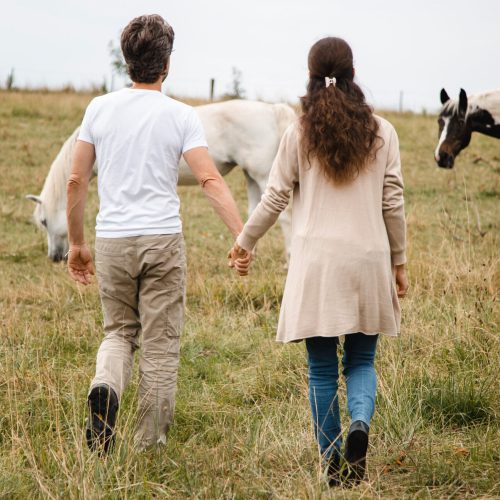
Contents of the training:
- Opening up and maintaining a space of trusting security
- Support for being in contact, organization, expansion and vitality
- Development and activation of positive resources
- Maintaining the therapeutic relationship
- Working with identifications and counter-identifications
- Tools of trauma-informed intervention (titration, pendulum, somatic mindfulness, etc.)
- Possibilities for regulating the nervous system (containment, breathing, grounding, movement, meditation, emotional release)
- Theory of shock and developmental trauma based on Somatic Experience and NARM (Neuroaffective Relationship Model)
- Practical exercises with horses on the dream therapy models, self-training in mindfulness, co- and self-regulation, sensory awareness or energetic perception
- Dealing with your own expectations, pressure and projections
- Recognizing and treating trauma symptoms
- Self-training in slowness, body awareness, connectivity, compassion, demarcation, presence, breathing, rootedness
- Interpretation of body language and application
- Psychoeducation
Content of the training:
- Opening up and maintaining a space of trusting security
- Support for being in contact, organization, expansion and vitality
- Development and activation of positive resources
- Maintaining the therapeutic relationship
- Working with identifications and counter-identifications
- Tools of trauma-informed intervention (titration, pendulum, somatic mindfulness, etc.)
- Possibilities for regulating the nervous system (containment, breathing, grounding, movement, meditation, emotional release)
- Theory of shock and developmental trauma based on Somatic Experience and NARM (Neuroaffective Relationship Model)
- Practical exercises with horses on the dream therapy models, self-training in mindfulness, co- and self-regulation, sensory awareness or energetic perception
- Dealing with your own expectations, pressure and projections
- Recognizing and treating trauma symptoms
- Self-training in slowness, body awareness, connectivity, compassion, demarcation, presence, breathing, rootedness
- Interpretation of body language and application
- Psychoeducation
Our experience
Our profound experience from seminars, coaching sessions and therapeutic processes enables us to train people to create a space of growth that is supported by trust, openness, compassion, friends, security and authenticity. Graduate meetings and group supervisions support a mutual exchange of experiences and the further development of equine-assisted work.
We have both been involved in equine-assisted coaching and equine-assisted therapy for over 15 years now and can look back on a broad and very differentiated wealth of experience in this healing work.
Dates
- 4 days of further training: June 05 - 08, 2025
Prices
- Trauma therapy: € 1,390 (incl. VAT)
Organization
- The training takes place at the Klokerhof near Windach am Ammersee (Bavaria).
- It starts on Thursdays at 10 am.
- It ends on Sunday between 2pm and 3pm. The days in between start at 9.30 am and end at around 5 pm.
- Hotels and guesthouses are available, we can send you a list of accommodation on request.
- You will receive further information after registration.
- This further training is aimed exclusively at graduates of our training as an equine-assisted coach.
Testimonials
Feedback on equine-assisted trauma therapy
Manuela and Carsten gave us a space of peace, appreciation and healing during the training in equine-assisted trauma therapy. The framework of the training, the wonderful community of participants and the careful and comprehensive look at trauma touched me deeply and strengthened me for trauma work in the long term. An enrichment in life. My heartfelt recommendation for all those who want to meet themselves and take a holistic and empowering view of traumatized people and their support.
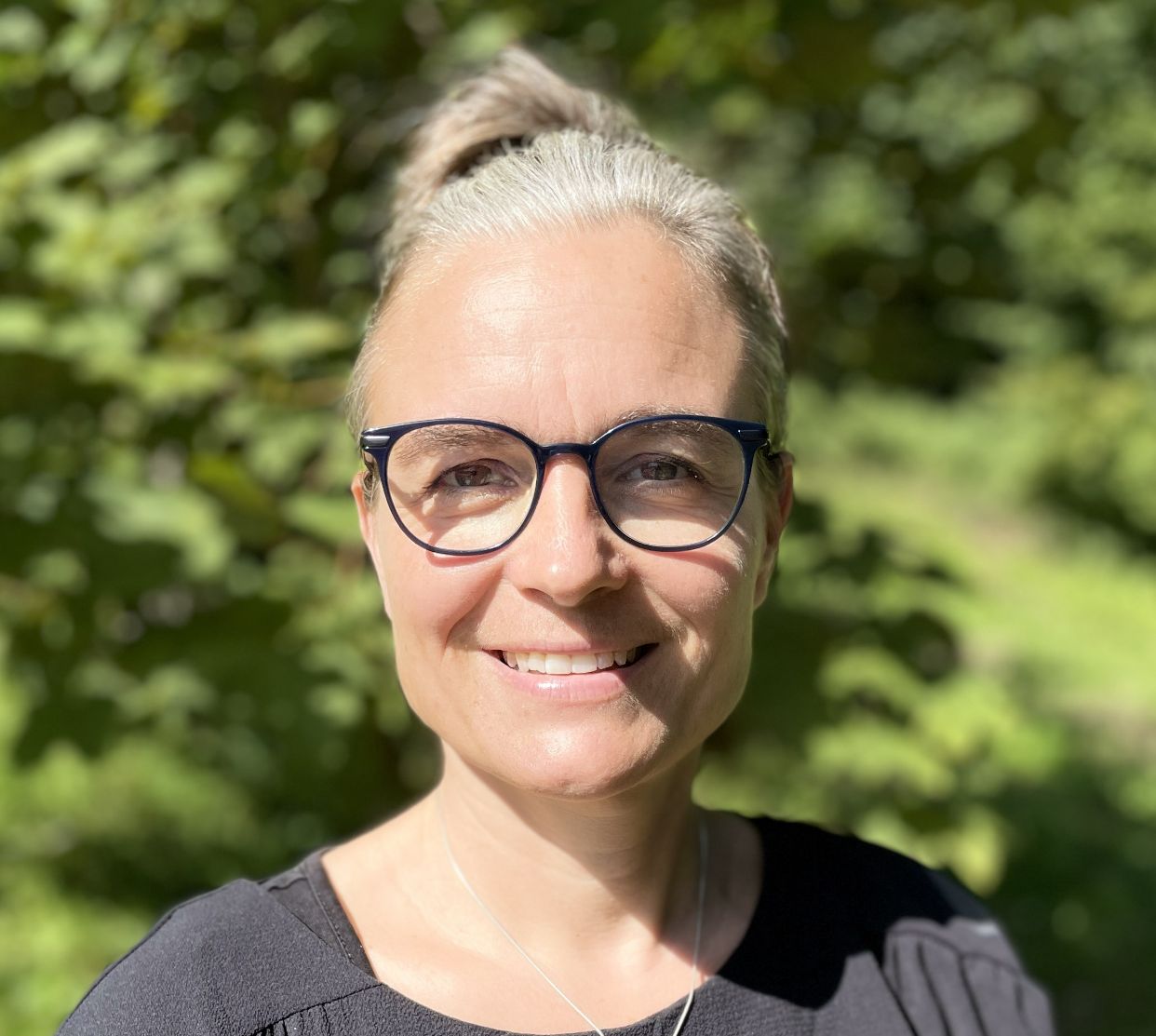
My time with you at the equine-assisted trauma therapy seminar was a wonderful and important experience for me personally and of course
for my work as a nurse and alternative practitioner.
By recognizing and perceiving my own inner values and gaining trust in my gut feeling, I can respond much better
and more intensively to each of my patients. I empathize with them and no longer feel insecure. I consciously learn
to separate my feelings from those of my counterpart and still feel them. This is so much better, harder and more beautiful at the same time,
simply much more intense. I am happy about every emotion that I am allowed to feel. Thank you, dear Manuela and dear Carsten, you are both stars of hope, a gift from the universe, especially at this time.
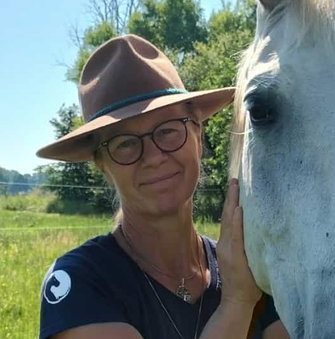
"Where love is sown, joy grows" (William Shakespeare)
After my training as an equine-assisted coach, I had the opportunity to complete further training in equine-assisted trauma therapy with you last October.
Filled with lightness and joy, I think back to moving, nourishing and deeply touching days.
In your loving space of support and passion, I was able to let myself fall in, explore and simply be myself.
Full of gratitude for these healing and inspiring days with you, I continue on my path, full of curiosity about what is waiting for me. Thank you for your being and work. You are a gift! Best wishes until we meet again,
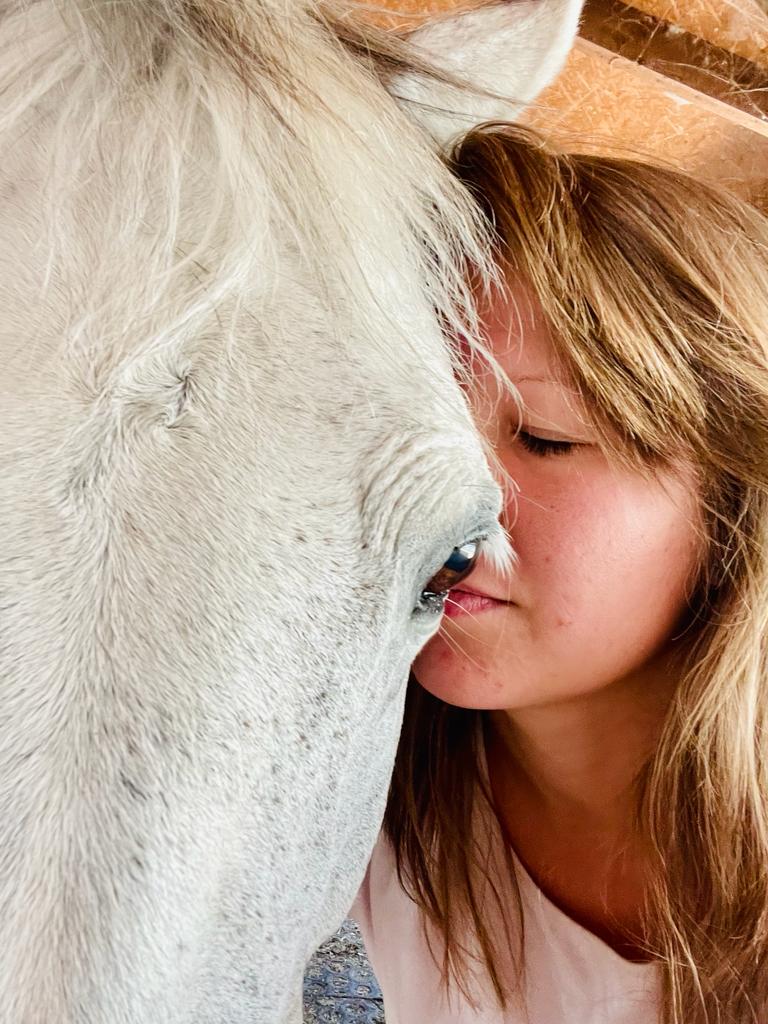
It was the right decision to also complete the trauma training with you.
With ease and at the same time depth, you create a wonderful framework in which you
pass on your broad knowledge and wealth of therapeutic experience and
enable sustainable self-awareness processes for each individual.
As in the basic training, there was a very special magic about the
days of further training, carried by your gentle, authentic and life-affirming
manner.
I was able to take so much with me, both professionally and personally!

I am so grateful. A lot of things are loosening up inside me and taking on new forms. I am so happy to have gone this way, with all its ups and downs. Thank you both - for everything! I hope you are doing well with everything and that you can see again and again how valuable what you are doing is. I try to pass on the values that I enjoyed with you and bring them to life with the horses. My vision was: "I spread love and live self-love". Incredibly, it has come true!

Carsten and Manuela showed me again this weekend in their wonderful and incomparable way
how to best deal with my own issues with the help of horses and how to sensitively help other people.
With every workshop or training at Leben Lieben Lernen I get closer and closer to my "Mindful Bliss".
Thank you both for your immense wealth of experience, your incredible sensitivity and the love you bring into the world.
I am really looking forward to more events with you.
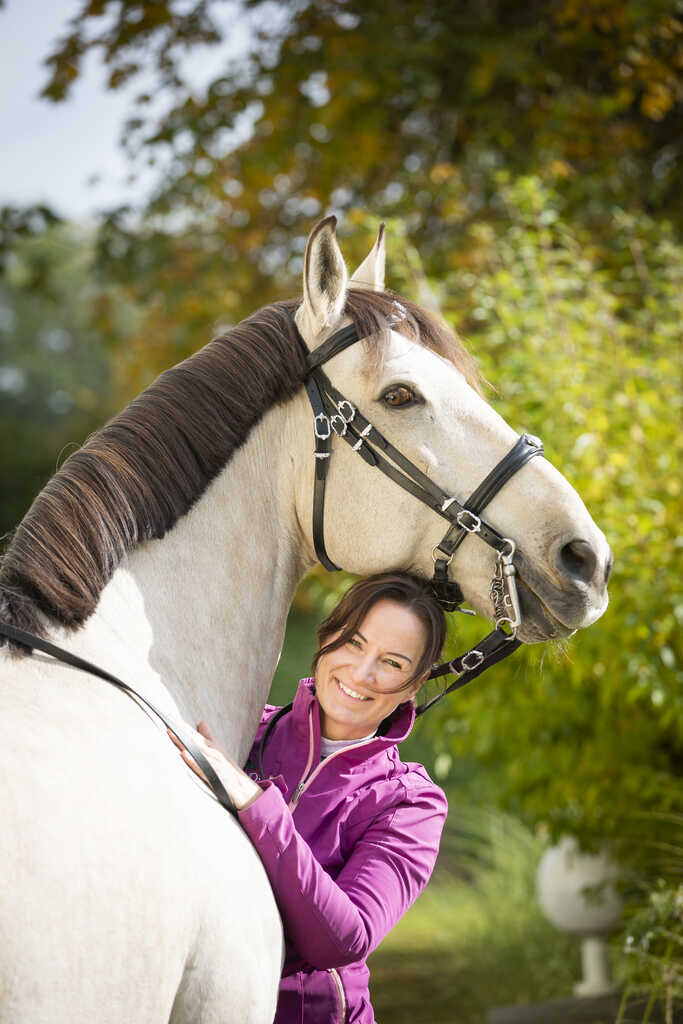
In the further training course in equine-assisted trauma therapy, you, dear Manuela and Carsten, were once again able to mediate between the material and spiritual worlds from your essence. We were able to learn how to heal ourselves and accompany others on their path to healing. Thank you for the light you bring. I can only recommend everyone to come to you.
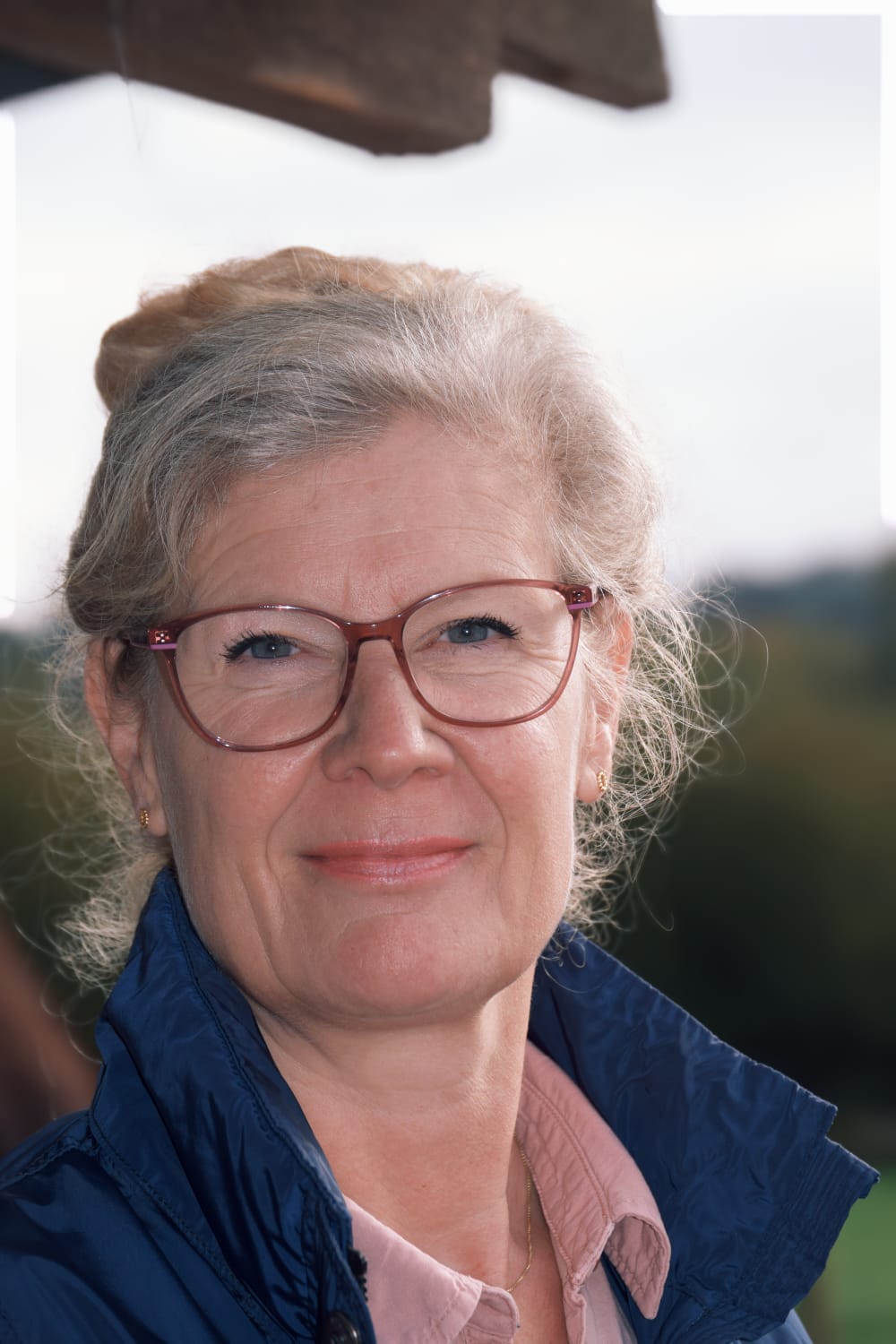
We look forward to seeing you
